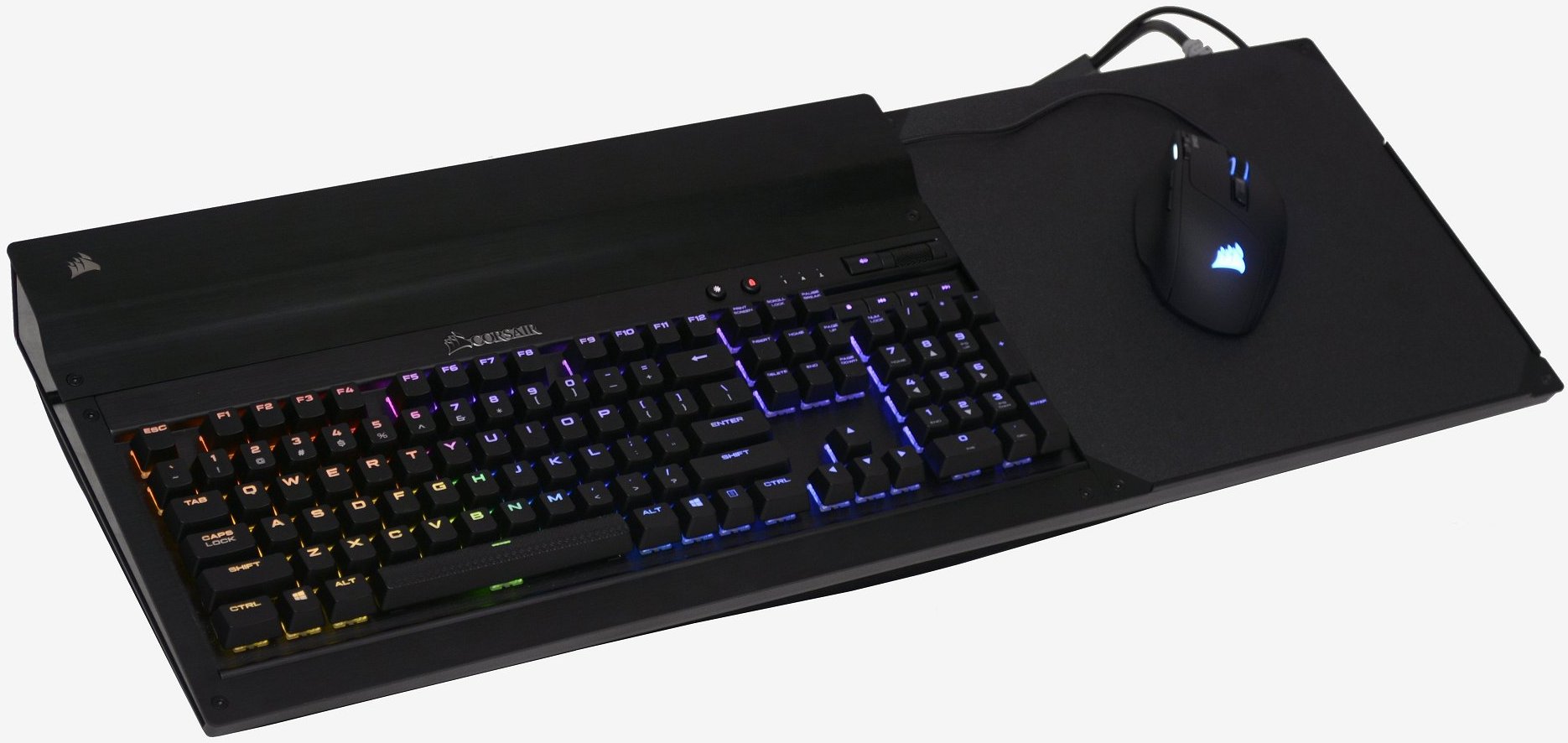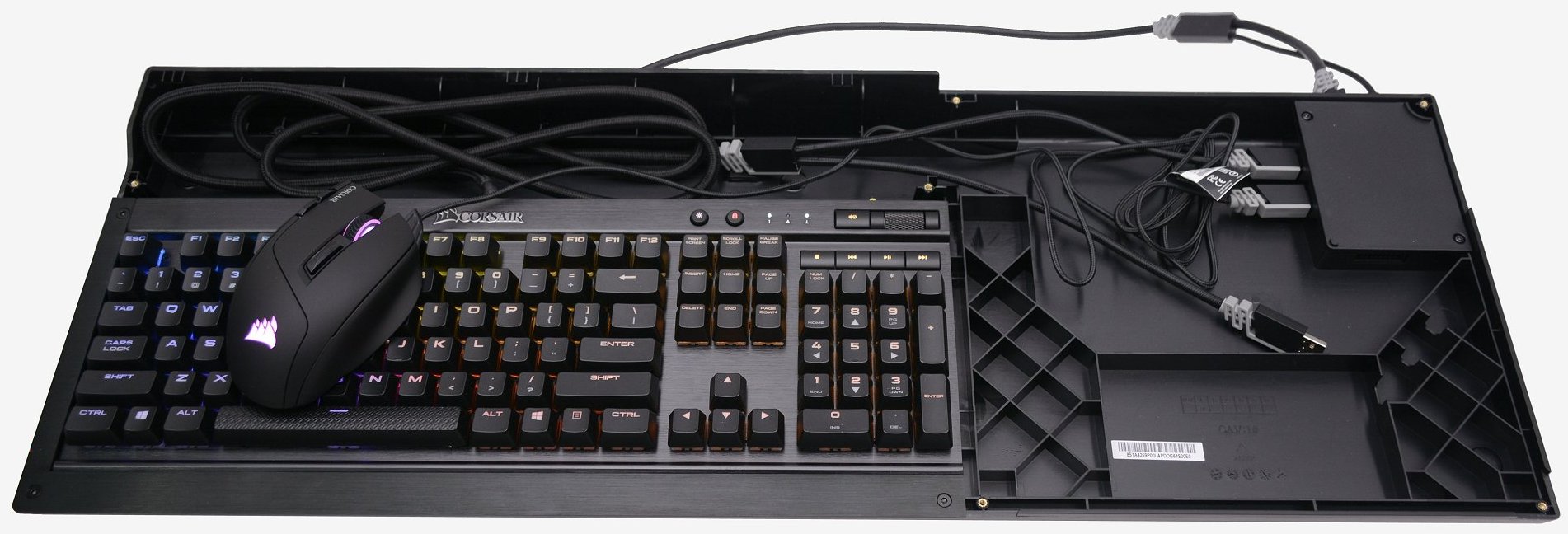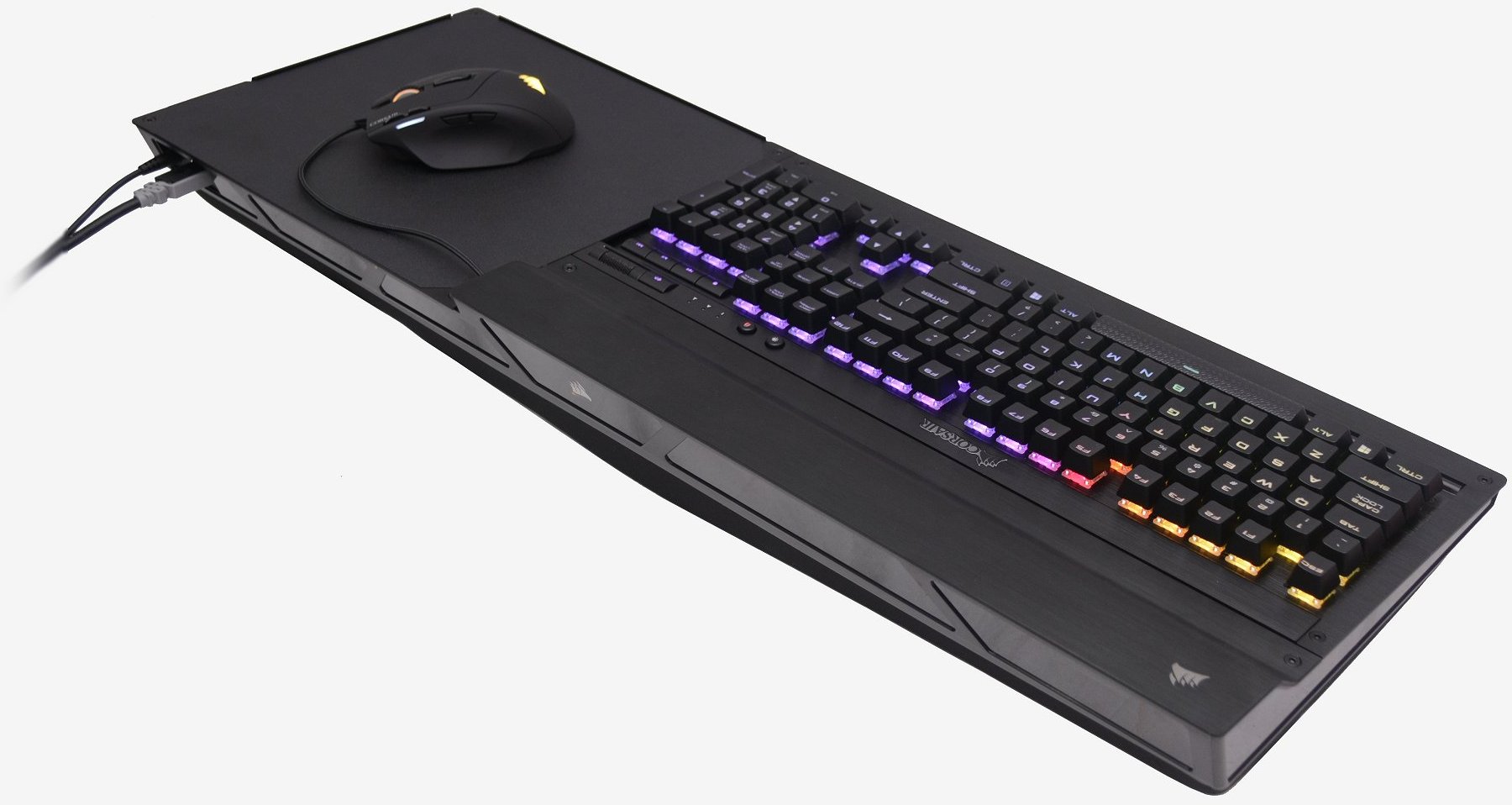One of the more exciting tech buys I recall making was my first truly large TV. It's been about 5 years now since I picked up a 55" LED TV for the living room to replace an older 42" Samsung model. After promptly mounting the shiny new display, the next step was to attach the home theatre PC, a capable machine of its time, though gaming wasn't really on the agenda.
The thought of taking my Steam games to the living room was mighty tempting, but ultimately I never bothered because of the impracticality of it all. Since then I've mostly played games such as F1 2015 using a Logitech G920 wheel and the occasional controller-friendly game.
While I have longed to play first person shooters on the big screen, getting the keyboard and mouse setup in a way that makes them usable is no easy task. With plans to acquire a much larger 4K screen soon, being able to enjoy the latest shooters and real-time strategy games with the same level of comfort that I do in my office would be amazing.
Attempting to make this dream a reality is Corsair with their new Lapgod, sorry I mean, Lapdog. Dubbed as the "Gaming Control Center" the Lapdog allows you to take a gaming mouse and mechanical keyboard and place it comfortably on your lap.
Not to take anything away from Corsair, but the concept and resulting product are simple enough, so I'm not sure why I've been waiting the better part of a decade for such a product.
There have been attempts by other companies to deliver a keyboard/mouse combo you can use on your lap but none have impressed. The Phantom Lapboard was innovative, but also awkward for gaming.
Evidently there must be more to it than meets the eye. I know Corsair has been developing and preparing the Lapdog for mass production for quite some time now. We first caught wind of it a year ago and like countless other gamers, I've been madly trying to pin down a release date.
Well the time is here and we have it in lap ready for some gaming.
Design & Features
The Lapdog will be sold as a standalone product (no keyboard or mouse) for what seems like a rather steep $120. Factor in the cost of the obligatory Corsair keyboard and your favorite gaming mouse and we're talking at least $250 for the bundle.
More specifically, the Vengeance K65 and K70 are $90 and $130, respectively. While the sleek Corsair Sabre RGB gaming mouse we used for testing is about $70. Unlike the keyboard you can use any wired or wireless mouse with the Lapdog, so a Razer, Roccat or Logitech mouse would be fair game as well.
Apparently there will package deals from Corsair which might present gamers will better value alternatives but we don't have the details on those yet.
For the standalone model you essentially get a plastic shell with some nice brushed aluminium bits that go on top and a nice big contoured cushion to go underneath. The Lapdog measures 28.94" (L) x 10.27" (W) x 3.70 (H)" or 735mm x 261mm x 94mm which means it can support a standard size mechanical keyboard with enough room for a decent mouse pad.
The lap cushion can be quickly and easily attached and removed, thanks to six magnetic points that grab the control center quite firmly. The cushion is made from memory foam, and honestly feels very comfortable on your legs. Cleverly Corsair has also embedded a mounting position for the supplied driver to remove the screws for accessing the underside of the top panels. This means you have everything you need to quickly make any adjustments to the layout.
On top we find a surprisingly large 11" by 11" (279 x 279mm) mouse pad plate on the right hand side of the Lapdog, sadly this can't be moved to the left side for the lefties. This hard surface mouse pad backs onto an aluminium plate which is removable via four screws. Those that prefer soft pads could place a mouse pad over the hard pad without any issues provided it is the correct size.
Opposite the mouse pad is the keyboard tray. Designed featuring an adapter plate the tray can cater for Corsair's full size K70 series as well as their tenkeyless K65 series. The keyboards fit like a glove and while that is to be expected I was still for some reason very impressed with the neat fit.
Running across the top of the keyboard tray is a removable cover for the cable compartment. This is where you feed your cabling from your keyboard, through to the USB hub at the right hand corner of the device.
This USB hub is the heart of the Lapdog. Powered by a DC input, this USB 3.0 hub provides users with four powered USB 3.0 ports. Two of these ports are internal, and are designed to connect your keyboard and mouse.
The keyboard uses the cable route through the top of the Lapdog, and there's a small port at the top left of the mousepad for your mouse cable. If you are using a wireless mouse, you could also plug your receiver in at this point, too.
On the right hand side, you'll find the two external USB 3.0 ports, which could be used for a USB headset or things like your smartphone or USB storage devices. The closest one to the user is also a fast charging port though for some reason it isn't labelled and therefore not identifiable. Corsair should have made the higher amperage port a different colour such as yellow or red for example.
Anyway, this is where you will want to connect your phone, tablet, or Bluetooth speaker for a quick charge. Lastly in terms of ports, you'll find the DC input and USB host port at the back right of the Lapdog's body.
Plugging into these ports is the conjoined USB cable and DC cable supplied in the package. This cable has plenty of length, at 16ft or just under 5 meters, and at the other end you attach the little DC power pack and plug the USB end into any USB 3.0 port.
It is important to note that the DC power is rated for just a single amp which could become an issue when charging devices that can draw much more than that, such as tablets for example.
This made me wonder just how quickly the fast charging port can actually charge, particularly given Corsair's specification calls for 1.5 amps. Therefore, I decided to do some testing.
As a benchmark the fast charger that comes with the Samsung Galaxy Note 4 takes about 90 minutes to complete a full recharge or 120 minutes with a standard charger. The Lapdog took approximately 150 minutes to charge my phone using the 1.0amp power pack with the phone plugged into the "fast charge" USB 3.0 port.
Getting the Lapdog up and running was relatively straightforward – though this isn't something you would want to do on a regular basis – you won't be sharing your desktop PCs peripherals with the living room setup. All told, it takes about 5 - 10 minutes to install the keyboard and mouse, possibly longer depending on how neat you are and if you opt for cable ties.
Using the Lapdog
If you are thinking designing a lap type product doesn't seem overly complicated, you are not alone. My initial impression was the same, however as I pondered what I would change to make the Lapdog better, the more issues I found with my own prospective changes. As it turns out, making a one-size-fits-all type lap solution for gamers is mighty hard.
So I must give Corsair a lot of credit on this first attempt. For the most part I found the Lapdog to be comfortable to use on the couch and games of all genres a heap of fun to play on my living room TV.
The contoured foam padding displaces the Lapdog's weight well across your legs and despite weighing in at 3.9 kilos fully loaded, it didn't feel nearly that heavy when in use and I didn't find the weight to be an issue after consecutive hours of gameplay (yep it has been a tough job this one).
Corsair's Sabre RGB tracked very well on the hard pad, this was actually the first time I have used this mouse and I have to say I was impressed. Using the mouse on the Lapdog really wasn't that different to my desk so that is a huge plus.
Sadly, the keyboard was a less satisfying experience. At my desk the awesome K70 RGB Rapidfire features a nice detachable wrist rest which I find not just comfortable but essential. Installed in the Lapdog the wrist rest is left behind and replaced by nothing. This made the Lapdog a bit wearing on my left hand as it attacked the WASD keys.
I found the front edge of the Lapdog to be quite sharp. This harsh edge became very uncomfortable before long and trying to avoid it just cause my hands to fatigue quicker. Because of this I couldn't help but feel the large space above the keyboard used to hide cables could have been put to better use as a wrist rest.
Roccat's upcoming Sova (announced in 2014!), another new couch solution for gaming looks to feature a design that will better suit my needs. Of course, we are yet to see the Sova in the flesh, so making any meaningful comparisons with the Lapdog is a bit pointless, but it looks like Roccat might have a more wrist-friendly product on their hands.
The only other gripe I have with the Lapdog is the lack of a 3.5mm audio passthrough for analog headphone users. Still given most gamers these days seem to be using USB headsets this probably isn't a huge deal.
Despite these gripes, I'm still very happy to have the Lapdog in my life and consider it to be the best option yet for gamers wanting to sink into the couch. The overall build quality is good and I particularly like the removable padded cushion.
At $120 for the standalone Lapdog it does seem a bit steep, but with no real competition and an underserved niche of gamers asking for such a solution, Corsair will likely get away with it.
The only viable alternative right now is Razer's $150 Turret – which not coincidentally was just released this month, TechSpot review incoming – the Turret includes a keyboard and mouse for that price, however these two products are not in the same league, with Razer's offering being more of a compact mobile gaming solution.
Overall the Corsair Lapdog is as good as PC living room gaming gets right now and I wouldn't hesitate to recommend it if you've been looking for a lap desk solution for long.
score
Pros: Unique solution for PC living room gaming. Works with any gaming mouse. Big but not too bulky, mostly comfortable.
Cons: No keyboard wrist rest. Pricey.














